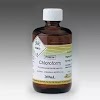Colouring agents used in Pharmaceutical and Food Preparations
Colouring agents are the substance which intended for promoting
attraction and gives pleasant appearance to the pharmaceutical preparations.
The pharmaceutical preparations are coloured dueto following reasons:-
i.
For identification of preparations: The pharmaceutical preparations are coloured in order to
distinguish them from other preparations.
Example: Anaesthetic
trichloroethylene is coloured blue in order to distinguish it from chlorodorm.
The medicated dressings and non-absorbable sutures are coloured order
to distinguish them from simple surgical dressings and absorbable sutures.
ii.
To increase acceptability to patients: Generally, the patients have more attraction for bright
coloured preparations.
Example: Coloured
tonics and cherry red cough syrup for chlidrens.
Skin coloured external preparations (
like ointments, creams, liniments and lotions) are more attractive to patients.
iii.
To giving warning: Some times colour is added in the
preparation to give warning to the patients. ‘Not to take it orally’.
Example: Blue dye is
added in methylated spirit so as to avoid its internal use.
iv.
To produce standard preparations: A suitable dye is used to give colour to the preparation
containing more than one ingredient of different colours.
Example: Lactose is
used as diluents for powdered opium, it is coloured with caramel to give a
uniform appearance to the preparation.
Qualities of an Ideal Colouring agents
Following factors are generally to be considered
while selecting any colorants.
1)
It should be readily
soluble in water.
2)
It should have good
colouring powder, so that only small quantity is required.
3)
It should be stable on
storage and it should be unaffected by light, temperature and hydrolysis.
4)
It should be affected
by oxidizing agents, reducing agents and pH changes.
5)
It should be free from
objectionable odour and taste.
6)
It should have no
physiological activity.
7)
It should be
economical.
The amount of colorants generally added to
liquid preparation ranges from 0.0005 to 0.1% depending upon the colorant and
depth of colour intended. For powder 0.1% colorants is considered to be
reasonable concentration.
Types of Colouring agents
1)
Natural
colurings: These are obtained from
mineral, plant, and animal sources.
a. Mineral
colours: Mineral colours frequently termed as pigments Examples
are red and yellow ferric oxides, titanium dioxide, carbon black, lead
chromate, Prussian blue etc.
b. Plant
colours: Many plants contain colouring principles that may be extracted and
used as colourants, e.g: chlorophyll. Anattenes are obtained from annatto seeds
and give yellow to orange water soluble dyes. Natural beta carotene is a yellow
colour extracted from carrots, alizarin is a reddish yellow dye obtained from
the madder plant. The indigo plant is the source of a blue pigment called
indigo. Flavones, such as riboflavin, rutin, hesperidin and quercetin are
yellow pigments. Saffron is a glycoside that gives a yellow colour to drugs and
foods. Most of these colorants possessing desirable qualities of stability,
fastness and pleasant hue are now synthesized.
c. Animal
colours: Cochineal obtained from the insect coccus cacti contains principle
the bright red colouring principle, carminic acid, a derivative of
anthraquinone. Tyrian purple was prepared by air oxidation of a glandular
secretion of snail, Murex brandaries. Animal colours are also not used now
synthetic colorants are readily available.
2)
Synthetic
colours: They can be obtained by
chemical reactions.
Table 1: List of Synthetic colours used in liquid dosage form
|
Colours |
Common name |
Colour index No. |
|
Green Yellow Red Blue Orange Brown Black |
Quinazarine
green SS Alizarin
cyanine green F Fast
green FCF Green
S Tartrazine Sunset
yellow FCF Quinoline
yellow SS Amaranth Erythrosine Eosin
YS or Eosin G Toney
red or Sudan III Fast
red E Indigo
carmine Brilliant
blue FCF Orange
G Resorcin
Brown Naphthol
blue black |
61565 61570 42053 44090 19140 15985 47000 16185 45430 45380 26100 16045 73015 42090 16230 20170 20470 |
It is very difficulty
to make a choice of colour to any preparation. The shade and the quantity to be
incorporated is very important. Red colour in different shades is very much
used in food products and pharmaceutical preparations. Tellow and green colour
comes afterward. Blue and black colour are not appealing.
Colour and flavor are
inter-linked with each other. If the flavor is that of lemon, the colour of the
preparation should also be lemon (yellow) colour. If the flavor is that of rose
then the colour of the preparation should be red.
The colours are also used in the form of lakes which consists of dyes absorbed generally on aluminium hydroxide. The lake consists of 15 to 40% adsorbed a









0 Comments